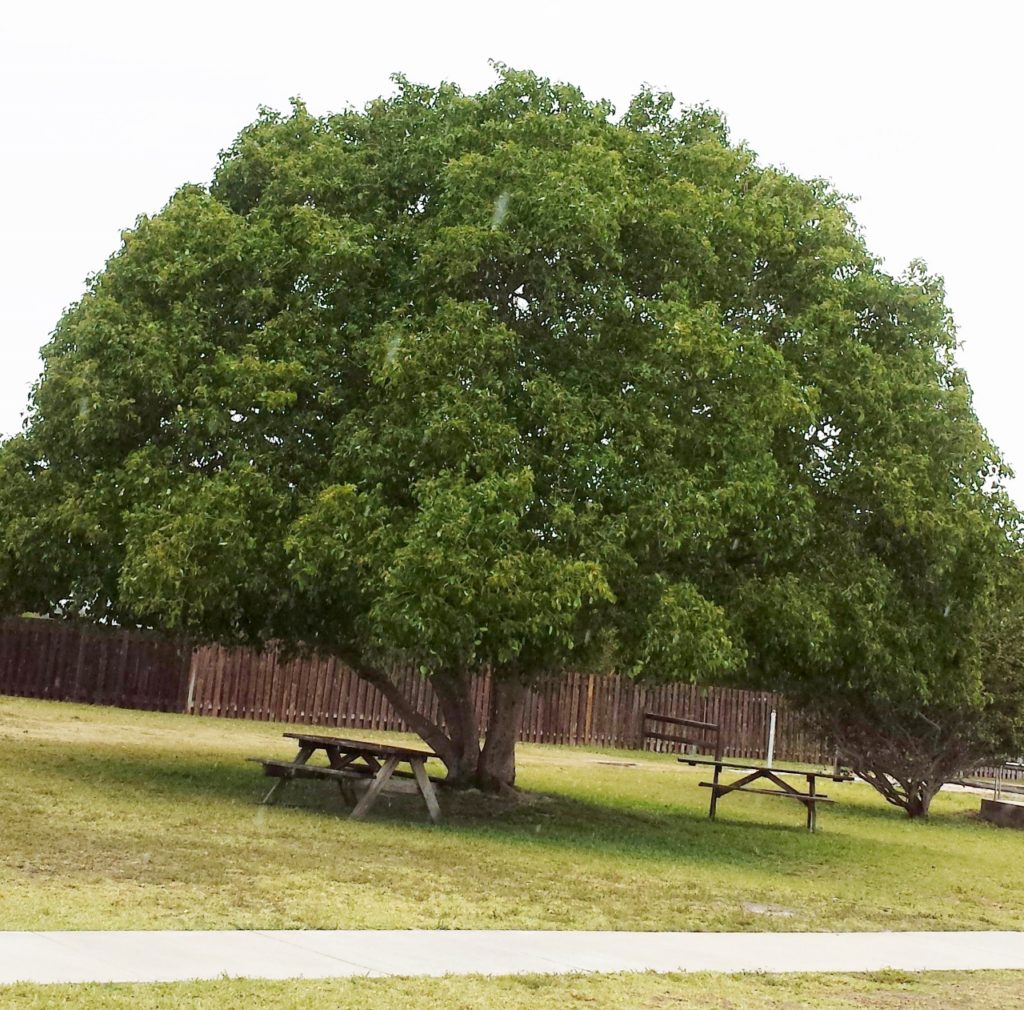
Short-Leaf Fig
Ficus citrifolia
Short-Leaf Fig or Wild Banyan Tree is native to southern Dade County and the Keys. It is as wide as tall and rarely over forty feet tall. There is usually a single, whitish straight trunk. Aerial roots may be sent down from the branches but are not as numerous as with Strangler Fig.
This is not a salt tolerant tree, but is very drought tolerant. The fruit are up to half an inch wide and are a super magnet to migrating birds. The young leaves are the larval food of the Ruddy Daggerwing Butterfly.
Just look for the long leaf stem which is of equal length as the leaf blade. The Strangler Fig has a shorter leaf stem (petiole).
If you want to attract Ruddy Daggerwings and many migrating warblers, cedar waxwings and local birds and animals, this is a truly great plant. I saw ten different species of birds on one tree in the keys during spring migration. The figs are tasty and fun to eat during a long hike.
The few aerial roots that are sent down can be cut off in order to keep a clean narrow trunk. This is a more polite neighbor that can be mixed in with other tall trees and not crowd them out the way a Strangler Fig will.
If you have a Short Leaf, Strangler Fig or Mulberry when the cedar waxwings pass through in the spring, you will see many of them come to your tree and gorge on the fruit.
Most hammock tree species will combine well with Short-Leaf Fig, but Gumbo Limbo, Pigeon Plum, Satin Leaf, Simpson Stopper, Soldierwood, Poisonwood, and Willow Bustic have beautiful bark that combines with Short-Leaf Fig to create a magical effect.
Make groups of each of these trees and underplant with ferns, Coontie, Wild Coffee, Marlberry, Jamaica Caper, White Stopper, Red Salvia, Dicliptera, Snowberry and other shade tolerant plants.